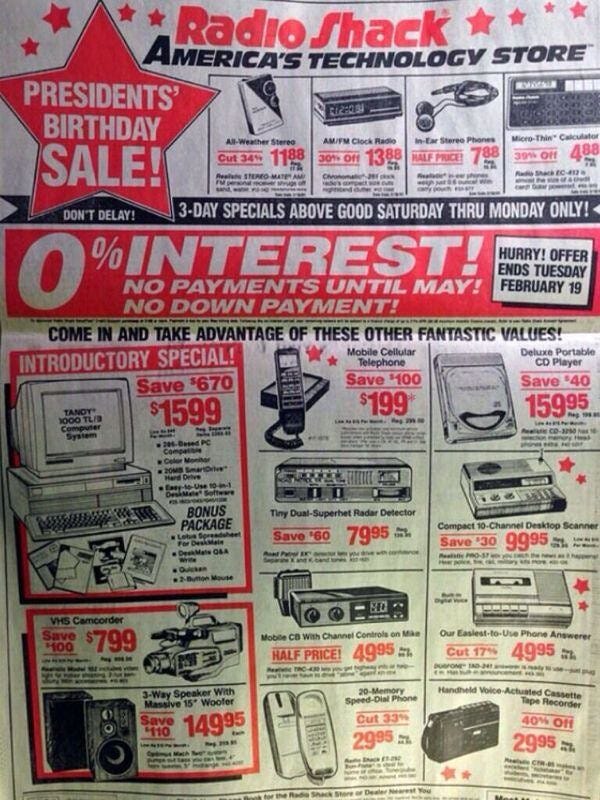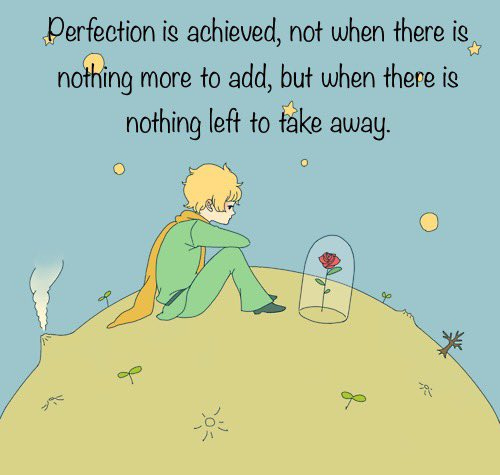Keystone Innovations
Over the course of the last century, we've seen an almost exponential increase in innovation across virtually all sectors, and the frenetic pace of advancement shows no signs of stopping. As I've observed these innovations firsthand in my own life, and as I’ve studied the advancements of the past and the predictions for the future, I’ve become fascinated by a concept I’ve taken to calling Keystone Innovations.
A keystone is a critical component of an arch, the piece that allows the arch to stand, and to effectively support weight. From the perspective of innovation, a keystone is any advancement that enables a wide range of new possibilities to finally be possible.
Much like unlocking a new branch in a skill tree in a video game, opening up new hitherto impossible options.
As a futurist, I’m constantly looking forward, trying to understand how things will transform and come together over the next 5, 10, or 20+ years, and this concept of keystone innovations has helped me to unlock what I believe is a key component to predicting the future.
The wheel, the printing press, the combustion engine, electricity, factories, the transistor, personal computers, the internet, mobile phones, AI…each of these was a keystone innovation, because they fundamentally changed the scope of reality. The impossible became possible, and because of one innovation countless others sprang forth.
A keystone innovation not only has a massive impact in the here-and-now, but has a lasting ripple effect, and creates a foundation upon which future innovations are able to build.
So how, you might ask, do you A. spot a keystone innovation, and B. use that knowledge to your advantage? Let me walk you through my process, using an example from current tech: smartphones.
When I’m looking at a piece of tech, I like to start by asking a handful of questions. First and foremost: “why does this device exist today, and how did it come to exist?” This can involve an exploration into predecessors to the device, what things the device has replaced, how people currently use the device, etc. To really understand something, you need to know where it came from.
A smartphone is an incredible blend of previous devices, many of which were large and clunky. Much of what a smartphone is comes down to three things: simplification, miniaturization, and amalgamation of past technology. I love this image, in which everything in the ad is now built into smartphones:
So, in this regard, it’s important to think about what other technologies could be miniaturized, simplified, and combined.
Second, just because something is used a certain way now doesn't actually make it the best tool for the job. A hammer can put a nail in a wall, but in many cases it’s not actually the best tool for the job (nail guns are way better).
When it comes to exploring a device from this perspective, I love the quote from The Little Prince that says “perfection is achieved, not when there is nothing more to add, but when there is nothing left to take away.”
Mainframe computers were miniaturized to desktops, which became laptops, which became smartphones and tablets. However, in every iteration there has always been a middleman…the device itself.
In the case of the smartphone, the device itself is actually a barrier to what we really want (easy, intuitive, omnipresent access to all the info and tech a smartphone provides). The very process of pulling out a device, turning it on, and using our hands to interact with it are actually points of friction, and removing friction from an experience is a key part of innovation.
Why were smartphones and tablets adopted so quickly, and why did they result in a massive hit to desktop and laptop sales? Because, particularly in the case of Apple devices, they provided users with a smaller, more simple interface, while making new things possible on the go. They provide (in most ways) more functionality than a laptop/desktop, with more battery life, in a smaller/lighter package, for less money.
That said, they’re still far from perfect, which brings us to our last question: “what’s wrong with this device?” You need to understand the limitations of current tech, and why those limitations exist, in order to predict what the future will bring.
Again, using the smartphone as an example, limitations of the device itself might include battery size/weight/life, screen size/resolution, processing power, memory/storage, the interface, antennae strength, and numerous other factors. External limitations would prevalence of reliable, high speed internet access, access to charging options when/where you need them, etc.
All smartphones at present make massive trade-offs due to constraints in battery technology, processing capability, average internet access speeds, and heat dissipation technology. These constraints are where you see keystone innovations appear, especially when a constraint is common across many different types of devices.
So, to sum up: I want to know where a device comes from and how it is being used today, I want to know in what ways a device might be changed or simplified to remove friction, and I want to know what limitations (either intrinsic or extrinsic) are preventing the device from doing everything it could possibly do.
With those things in mind, you can start scoping out what sort of keystone innovations might be needed to take that device to its next logical iteration. What sort of keystone innovations could I see transforming the smartphone?
Wireless power, cloud computing, augmented reality, and universally available ultra-high speed internet access are the ones that I think are most critical. Of course, advances in these spaces would have massive ripple effects across countless other devices and industries, which is an important part of what makes them keystone innovations.
Power, in terms of both heat and battery size, is one of the biggest factors impacting the size of a phone. While cloud computing exists, and is rapidly growing, it’s value is largely limited by the internet pipelines through which cloud computing benefits flow. Augmented reality exists, but it’s very poor tech at present for the exact same reasons. Last but not least, the average download speeds on a phone, while much better than they once were, still (mostly) pale in comparison to a nice gigabit land line.
So let’s try a thought experiment. Assuming the above tech existed and was perfected, what would a “smartphone” look like? If I had to make an educated guess, I’d say a pair of contact lenses, a pair of wireless earbuds, and a pair of very close fitting bracelets (perhaps something like the Myo, though vastly more compact and sleek).
The contact lenses would be your screen (and quite possibly your camera; if light has to flow through the lens to your eye, surely the light can be captured in some way just like a camera). The earbuds would of course handle the sound and microphone duties, but could also be the devices through which your power, high speed internet, and cloud-based processing and data storage flow. The arm bands could also play a role in power/internet/data, but would also be a means of interfacing with your device outside of verbalization, as well as receiving notifications or haptic feedback.
Imagine the ability to walk down the street, point at something, and say “what is that?”…and then, like magic, to have your tech recognize what you were looking/pointing at, find the data, and present the answer via audio and an interactive digital overlay? Or to be walking along and say, “man, I’m hungry,” and then have a map with directions appear before your eyes pointing you to your closes favorite restaurant that is open, that you haven’t eaten at in a while?
With advances in wireless power, cloud computing, augmented reality and high-speed mobile internet, these and numerous other interactions become possible…and that’s a world I REALLY want to live in :)
So how do you use this knowledge to your advantage? As an investor, I'd keep my eyes peeled for companies working on technology related to keystone innovations. At the same time, I'd take a very close look at ideas and companies that have failed in the past, and ask the question "If that same company were started today, or at some point in the future when technology X, Y or Z exists, would it be able to succeed?"
I firmly believe that the pot of gold isn't at the end of the rainbow, but at the intersection of various keystone innovations.
I wrote a very in-depth post a while back that explored some of the advancements I expect to see in the future. What are some advancements you think would qualify as keystone innovations?
*Originally posted on LinkedIn, here.




